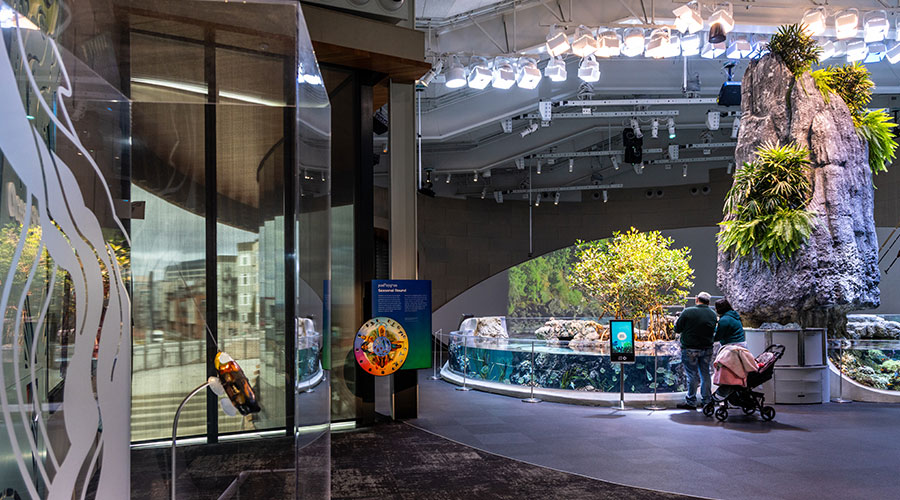Lighting Systems and IEQ
REPORT PREPARED FOR enLIGHTen AMERICA
Through careful lighting selection, both energy efficiency and greater workplace productivity are possible. Today, lighting technology makes it straightforward to achieve those goals. For example, fluorescent lamps offer high color rendering index performance, which can improve occupant satisfaction. Eliminating wasted light while providing a productive visual environment should be the ultimate goal for any facility executive considering lighting upgrades.
The potential to boost occupant productivity while reducing energy usage is one argument frequently made for daylighting. Anderson says she is seeing more attention being paid to that strategy. Facility executives are doing things like specifying light-colored surfaces for walls and ceilings to brighten spaces and better reflect light within spaces and opting for interior configurations that allow the maximum number of occupants to take advantage of natural light, she says.
To achieve productivity gains, the lighting has to be suitable for the task at hand, it should be the right amount of light, and it should be provided when and where it is needed.
Lighting controls enable users to adjust light levels based on changing needs or individual preference, either through dimming or through switching. Office space conference rooms — which could be wired with occupancy sensors and dimmers — are a classic choice for maximizing lighting flexibility.
Lighting isn’t needed in conference rooms when unoccupied. But when occupied, conference rooms can host many activities: training, presentations and team meetings — all of which potentially require different lighting.
The key to putting light where it’s needed is to establish control zones. A zone can be as small as a single ballast or light fixture, which enables the greatest amount of control resolution. Generally, the smaller the control zone, the greater the control resolution and potential utility cost savings and the greater the opportunity to enable the lighting system to support visual needs.
Favorable payback rates make control systems a cost-effective choice, too. According to the New Buildings Institute, lighting controls can reduce lighting energy consumption by 50 percent when chosen as a retrofit, and by 35 percent in new construction.
Improvements in indoor environmental quality can also boost tenant retention for building owners. “A good lighting system can seal the deal for your property,” says Ward, “making it commercially valuable and optimizing occupancy rates.”
Ultimately, facility executives have to define their purpose in boosting lighting efficiency. Some will want better lighting quality — such as retail organizations and surgical suites in a hospital — while others have a need for cost-savings, particularly those organizations facing long lamp operation times and high utility costs. Consequently, the first step in determining the right lighting strategy is to thoroughly define and understand the application goals.
“Often, we find that you don’t need as much light as what was initially designed,” says Gotti. “It’s important to maintain appropriate light levels, but you can make many effective changes depending upon the design and tasks within your building.”
“It also helps to get into the science of good lighting,” Ward says. “In my experience, just by upgrading our lighting we achieved an enormous boost in morale. It’s worth it.”
Related Topics:
















